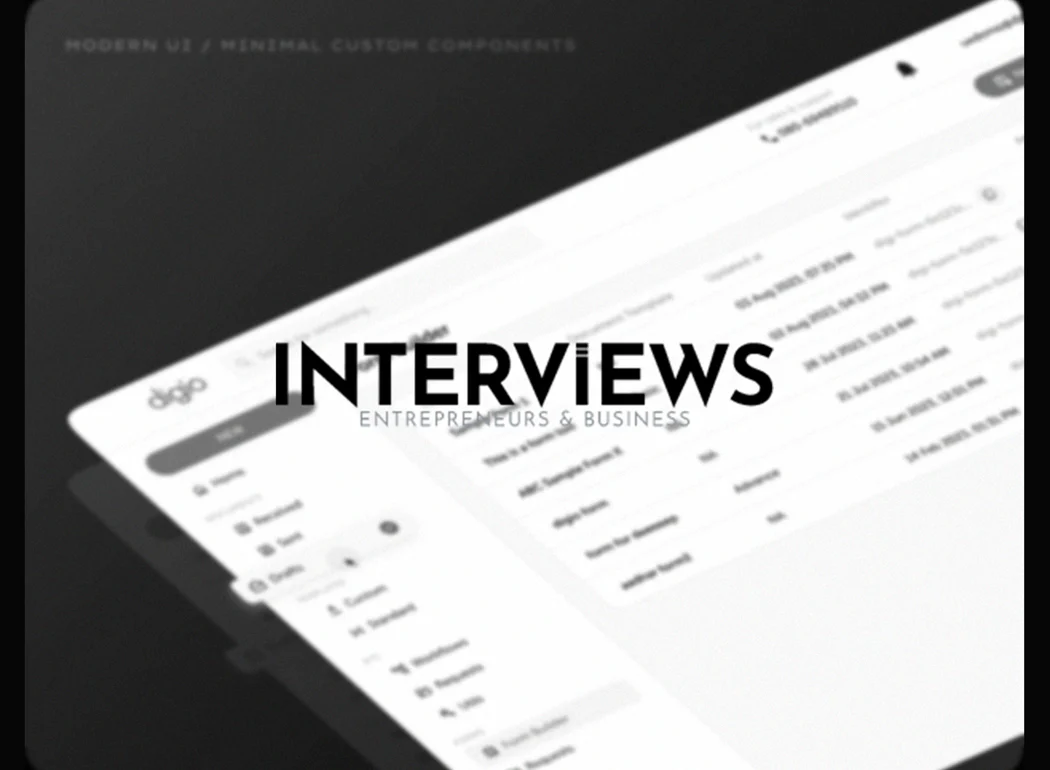Ditch the Typeform Hype? Snappier, Smarter Form Builders Are Here (And Some Are Even Free!)
Online forms can feel tedious. Typeform arrived, promoting enjoyable forms. Their conversational style turned heads. But is Typeform still the top choice? Are there better and cheaper options available? Let’s explore alternatives to Typeform you may find useful.
The world of form builders is quite large. If Typeform’s costs or limits overwhelm you, this is the right place to explore. Alternatives may make you forget that purple logo. Let’s discover free platforms and extensive features that could make your form-building endeavors more enjoyable.
Typeform: The Form Darling, Briefly Examined
Typeform, founded in sunny Spain in 2012, shook up forms with a focus on user experience. Founders Robert Muñoz and David Okuniev sought to make data collection feel like a pleasant conversation. They achieved this with their engaging, one-at-a-time format.
Typeform excels at creating forms people enjoy completing. Their approach improves completion rates. It feels less like shouting into the void, and more like receiving actual responses. Their forms look attractive too, allowing for customization, logic jumps, and payment collection. You can manage data easily.
However, Typeform has drawbacks. Their charm comes at a price. Their rates have increased over time, and the free plan has become quite limited. You only get 10 responses monthly. That’s hardly enough to survey even a small customer base.
While their interface is appealing, it has its limits. Respondents can submit forms multiple times, which can muddy your data. Moreover, although they provide data analysis, other tools might offer richer capabilities.
Why Wander from Typeform’s Embrace? The Case for Alternatives
Why consider alternatives to Typeform? There are valid reasons. First, let’s discuss price. Typeform’s plans start at $29 for just 100 responses. It seems steep for newcomers or those needing more volume.
Next, they impose response limits. Even paid plans cap at 50,000 responses monthly. While it sounds generous, larger businesses or viral surveys might face challenges. Nobody enjoys hitting a response wall mid-survey when data is vital.
Some users find Typeform lacking in specific features. If you need seamless WordPress embedding, WPForms has you covered. If you seek advanced logic and privacy features, Feathery stands out. For a mix of conversational and traditional forms, Gravity Forms offers flexibility.
In summary, while Typeform serves its purpose well, alternatives abound. There’s something out there for every budget and need in the vast form builder universe. Let’s look at the finest alternatives to Typeform.
The Contenders: Typeform Alternatives for Every Form Fancy
Time to examine Typeform alternatives! Each offers unique strengths and features. Think of it as speed dating for form builders. You are bound to find a perfect match.
For the Data Nerds and Customization Kings: ClickUp
If you love spreadsheets and desire solid data analysis, ClickUp could be perfect. They provide robust forms alongside project management tools. ClickUp excels in form customization and insightful data collection. It feels like Typeform with enhanced data capabilities.
For the “Keep It Simple, Stupid” Crowd: Google Forms
Sometimes you need straightforward forms without extras. Enter Google Forms. It’s free if you have a Google account, which is common. Google Forms handles quick surveys or basic contact forms well. Plus, enjoy unlimited forms and submissions.
For the Jack-of-All-Forms Trades: Jotform
Jotform is versatile and user-friendly like a Swiss Army knife. It covers all types of forms—surveys, applications, orders—you name it. Jotform has more features, options, and often better pricing than Typeform. If you seek versatility, Jotform is ideal.
For the Reporting Rockstar: Wufoo
Great data needs beautiful presentation. Wufoo excels in detailed reporting. If you’re a marketer or researcher who loves analyzing data, Wufoo’s reporting capabilities will impress you.
For the Aesthetically Inclined: Formstack
Looks matter in form creation. If you want functional yet attractive forms, Formstack fits the bill. They focus on creating visually appealing forms that impress. If branding matters, Formstack can help elevate your forms.
For the Privacy-Obsessed and Tech-Savvy: Feathery
Given today’s concerns about data privacy, Feathery stands out as a top choice. They prioritize being the best builder for privacy while providing advanced logic and design features. For privacy-focused projects, Feathery excels as a sophisticated option.
For the Microsoft Loyalists: Microsoft Forms
If you use Microsoft services, Microsoft Forms is ideal. It integrates well within their suite of tools. Simple and straightforward, it is probably already part of your Microsoft subscription. Perfect for fans of Microsoft’s ecosystem.
For the Security-Conscious: Zoho Forms
Security is essential today. Zoho Forms focuses on secure building practices. They ensure that your data remains safe. If data security is critical for you, Zoho Forms provides a trustworthy platform.
For the Do-Gooders: Cognito Forms
Nonprofits often need budget-friendly options. Cognito Forms supports this need well. They are known as the best builder for nonprofits. Offering generous features at reasonable prices, Cognito Forms helps charitable organizations thrive.
For the WordPress Devotees: WPForms
WPForms caters specifically to WordPress users. It integrates seamlessly and offers a wizard for embedding forms without code. Create standard forms with custom layouts and spam filters for your WordPress site.
For the Frugal Form Fanatics: Tally
Want free unlimited forms and submissions? Meet Tally. Unlike many builders that charge for features, Tally provides these for free. If “free” excites you, give Tally serious consideration.
For the AI-Powered Survey Sorcerers: SurveySparrow & Forms.app
AI influences every digital space today, including forms. SurveySparrow and Forms.app feature AI enhancements in their free versions. SurveySparrow enhances functionality with multilingual offerings.
Forms.app generates survey questions via AI. If you want to explore AI in form creation, these tools show the future.
Open-Source Choice: LimeSurvey
LimeSurvey is free and open-source. It offers freedom and flexibility for survey creation. If you like open-source solutions and want control, choose LimeSurvey.
Free Survey Options: Survio, Fillout, & SurveyPlanet
More free choices are available. Survio and SurveyPlanet join Google Forms as free survey tools. Fillout is an easy-to-use survey builder with customizable advanced fields for users who want more features without hassle.
For Conversational & Traditional Forms: Gravity Forms
You decide between conversational or traditional forms with Gravity Forms. It allows building both, offering what Typeform does not as it focuses solely on conversational forms.
Team-Friendly Options: Paperform
Paperform has plans for individuals and teams. Its “Essentials” plan starts at $29/month, while the “Pro” plan for businesses is $59/month. For those who want more features, Paperform’s paid options provide better functionality.
Step-by-Step Content Strategy: LeadQuizzes
LeadQuizzes allows you to segment forms into smaller parts. This differs from Typeform, which presents the entire form at once. If breaking down content increases engagement, Go with LeadQuizzes.
For Quiz Creators: ScoreApp
If you focus on quizzes, ScoreApp is the tool. It is a dedicated DIY quiz builder. ScoreApp provides features meant for quiz-specific creation.
Typeform vs. Competitors: A Quick Comparison
Typeform faces its main competitors in direct comparison.
- Typeform vs. ClickUp, Google Forms, Jotform, Wufoo: ClickUp excels at customization, Google Forms for simplicity, Jotform for versatility, and Wufoo in detailed reporting. All outshine Typeform in certain areas.
- Typeform vs. SurveyMonkey: SurveyMonkey has advanced features missing in Typeform, like HTML editing. However, it has a steeper learning curve. If you need those features and can manage the complexity, consider SurveyMonkey.
- Typeform vs. Jotform: Jotform generally provides more features, customization, integrations, and better pricing than Typeform. It is often the more feature-rich option.
- Typeform vs. Google Forms: Typeform offers heightened customization while Google Forms serves simple needs. Typeform has a mobile app, unlike Google Forms. Google Forms is free, while Typeform has limited options in its free plan.
- Typeform vs. LeadQuizzes: Typeform displays all content at once. In contrast, LeadQuizzes divides content into steps. Select based on presentation preferences.
- Typeform vs. WPForms: WPForms seamlessly integrates with WordPress and offers features that Typeform lacks. Also, WPForms can be more affordable.
- Typeform vs. Feathery: Feathery provides strong form logic, even better than Jotform. Typeform suits basic surveys, but Feathery excels in complex applications.
- Typeform vs. Microsoft Forms: Typeform leads in advanced data analysis compared to Microsoft Forms if data analysis is high on your list.
- Typeform vs. Gravity Forms: Gravity Forms supports both traditional and conversational forms. In contrast, Typeform focuses solely on conversational types.
Typeform’s Pricing and Limitations
Now, let’s talk about Typeform’s pricing and restrictions, as budget matters.
The “Basic Plan” starts at $29 per month allowing only 100 responses. For more responses, the “Plus Plan” raises it to $59 per month. Each has unlimited forms and questions, but response limits can be frustrating. The free plan only allows 10 responses monthly.
The maximum response limit for all Typeform plans is 50,000 monthly. If you expect high engagement, that limit may be restrictive.
Also, respondents can submit multiple responses. This situation could distort your data, affecting the reliability of your survey results.
Google Forms: The Free Form Leader
Google Forms deserves special recognition for being free. It’s accessible to anyone with a Google account, providing full access. Additionally, it is useful for simple form needs.
Unlimited surveys and responses? Yes. It is user-friendly too. It may lack the many features of paid platforms but remains powerful for basic form needs.
Zero-Cost Form Tools: A Quick Summary
If you seek a form builder without subscription fees, many options exist! Here’s a quick list of free tools:
- Google Forms
- Microsoft Forms
- SurveyMonkey (Basic Plan)
- SurveyPlanet
- Jotform (Free Plan)
- LimeSurvey
- Survio
- SurveySparrow (Free Plan)
- Forms.app (Free Plan)
- Fillout (Free Plan)
- Cognito Forms (Free Plan)
- Tally
You have several options to explore that won’t cost you anything!
Anonymity in Feedback: Tools for Honest Voice
Anonymity can be crucial for feedback collection. Need honest feedback without identified respondents? These tools provide that option:
- Zonka Feedback
- Typeform
- Jotform
- Survicate
- Vevox
- Google Forms
- Microsoft Forms
- Free Suggestion Box
- SurveyMonkey
- Poll Everywhere
Anonymity-focused tools are vital for suggestion boxes and sensitive feedback surveys.
Typeform’s Origin: A Brief History
A quick historical note: Typeform started in 2012 by Robert Muñoz and David Okuniev in Spain. Typeform SL creates software solutions for engaging forms, surveys, and quizzes. Though based in Spain, their use is worldwide.
Why Users Like Typeform: Engaging Design
Typeform still holds fans despite limitations because of its engaging user experience and design. Its conversational format boosts completion rates, making data collection less tedious.
Typeform makes forms feel less like typical forms and more like conversations. This appeal resonates strongly with users.
The Form Choice is Yours
So, is Typeform the champion of form builders? That depends on your needs. It excels in creating engaging forms with sleek design. Yet its cost can be a barrier, limits can frustrate users, and some features might be missing compared to other tools.
The good part is you have numerous options! From ClickUp’s data capabilities to Google Forms’ simplicity, from the versatile Jotform to privacy-oriented Feathery, there’s a Typeform alternative fitting every need.
Your best choice depends on your priorities. Consider your budget and required features along with data analysis needs and desired presentation style. Explore alternatives, test some free plans, and find the form builder that suits you best. Happy forming!




